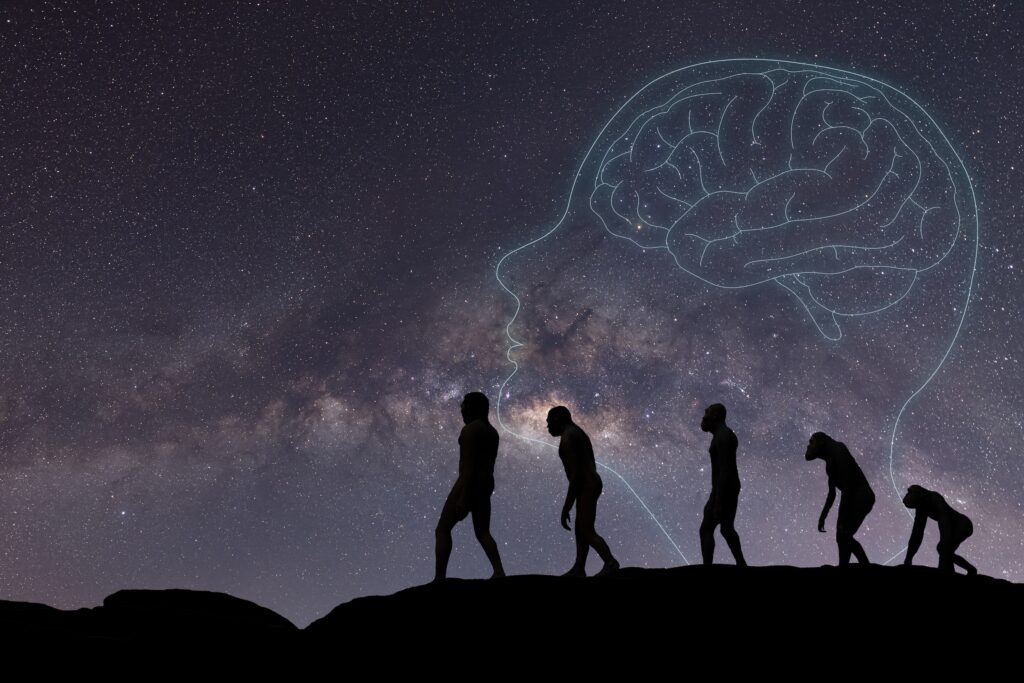From points to fluctuating strands: advancing theoretical physics
Reading | Physics
![]() Christoph Schiller, PhD | 2023-06-11
Christoph Schiller, PhD | 2023-06-11

To advance, theoretical physics must stop thinking in terms of points (be it point-sized things like particles, or points of space) and, instead, think in terms of the configurations and fluctuations of strands constituting the underlying fabric of reality, argues Dr. Schiller. While his views still preserve distinct strands, we believe it is a step forward towards a holistic understanding of nature as the behavior of an extended substrate, as opposed to the dynamics of discrete things.
Overview
In contrast to the progress in experimental physics and in all other sciences, progress in fundamental theoretical physics has been slow for the last five decades. Why were so many efforts in vain? There are six reasons. The first reason is the insistence to use points to describe particles and space. Five additional habits of thought slow down fundamental theoretical physics even more.
The present essay argues that all six delaying habits can be eliminated in exactly the same way: points need to be substituted by a different kind of fundamental concept. The new concept is provided by the common constituents of space, black holes, particles, wave functions, and forces. Distilling the correct constituents allows answering the open questions of fundamental physics, including the origin of all colors in nature.
The need for a change in fundamental physics
All of modern science, from Galileo to today, can be seen as the quest to describe with precision everything that is observed. Now, in all observations, something moves. The precise description of motion is the subject of physics. Modern physics can be seen as the quest to describe with precision everything that moves. In fact, only two aspects of nature are found to move: particles and the curvature of space.
Due to its drive towards describing particles and space to full precision, science has made—and is still making—steady progress in all its domains, from material science to chemistry, from the geosciences to astronomy, from physics to astrophysics, and in all the life sciences. As a whole, because of this drive, science is a fascinating success story.
In the success story of science, there is one exception. For the last five decades, fundamental theoretical physics—in contrast to the other parts of physics—has stagnated. All known fundamental properties of nature were described in 1973. They agree with all experiments. Nevertheless, there are important open questions. For 50 years, the origin of the interactions, the origin of the elementary particles, and the origin of the fundamental constants remain unknown. For example, there is no explanation for the origin of electricity and radioactivity, no explanation for the origin of electrons and quarks, and no explanation for the strength with which electrons interact with photons. This strength is described by a number, the fine structure constant, measured to have the value 137.0359992 [2], but whose origin is unknown. Because the origin is unknown, also the precise origin of every single color in nature is unknown.
Why is the origin of colors unknown? Why are the origins of particles, forces and their strengths still unclear, despite a large number of researchers working on them? In the following, it is argued that six reasons prevented progress:
- The habit of using point particles and points in space.
- The hesitance to conceive a model for black holes.
- The hesitance to conceive a model for particles and wave functions.
- The hesitance to conceive a model for space.
- The habit of looking for a unified equation.
- The hesitance to conceive a model for forces.
Interestingly, the solution for each impasse is the same: nature must be described with a new type of fundamental constituents.
Points do not exist
The two great achievements of twentieth-century physics—general relativity [1–3] and the standard model of particle physics, extended with massive Dirac neutrinos [4]—describe nature with full precision. Even though hints of deviations arise regularly, no hard data contradicts either of the two theories. Despite huge incentives to find deviations, none has been confirmed. The two theories stubbornly insist on being correct and precise.
When the two theories of physics are combined, one finds a striking result. There is, in nature, a smallest measurable length [5–7]. The smallest measurable length is given by the Planck length, about 10−35 meter. The value is incredibly small, and far from any experimental detection. No experiment has reached it, and it appears that no experiment will ever do so. But above all, the value is not zero. In short, between two points in space, there is not always a third one.
Likewise, there is also a smallest measurable time interval in nature. The Planck time is about 10−43 second. Again, the smallest measurable duration is not zero. Between two instants in time there is not always a third one.
The existence of the smallest measurable length and time implies that a correct description of nature cannot be based on continuous space and time. Space and time are not continuous. There is no way to confirm that space is made of points or that time is made of instants. On the one hand, this result is fascinating. On the other hand, we cannot even think or talk about nature without continuous space and time. In particular, all equations of physics use continuous space and time.
Is there a way out of this dilemma? Yes, there is. Both points of space and point particles must be substituted by something of the Planck size. Space and particles both must have constituents of Planck size. In usual experiments, the Planck size is not detectable, the constituents can be ignored, and we can use points. When exploring general relativity only, the constituents are averaged out; thus they are not important. When exploring quantum theory only, the constituents are again averaged out; again, they are not important. But when general relativity and quantum theory are combined, and only in this situation, at the foundations of space and time, when we want to understand the origin of forces and particles, Planck-scale constituents become inevitable.
Black holes are the key to the constituents of nature
50 years ago, Bekenstein and Hawking discovered that black holes have entropy and temperature [8, 9]. This result implies two important aspects: first, the value of entropy (and temperature) is finite; second, the values are given by the ratio of the surface of the black hole and the square of the Planck length. The entropy value implies that black holes are made of constituents that are of Planck size in two directions (nothing can be deduced about the size in the third direction). Black holes are thus made of countable, or discrete, constituents. This confirms the results that arise when general relativity and quantum theory are combined, as expected. But in fact, an additional, new result can be deduced.
Black holes are highly condensed matter. In other words, black holes can be seen as highly condensed or compressed particles. At the same time, black holes are highly curved space. In other words, black holes can be seen as a specific configuration of space. As a result, the constituents of black holes are the same as the constituents of space and of matter. To say it simply: space and particles are made of common constituents.
How can space and particles be made of the same constituents? Space and particles differ: particles are like small stones, small and compact, whereas space is extended, spanning across the universe. The common constituents must therefore be both small and extended at the same time. The properties of black holes imply that the constituents must be tiny in two directions and large in one. In other terms, the common constituents of space and matter and radiation must be strands of Planck radius that are as extended as the universe.
Particles and wave functions can be illustrated
Both experiments and quantum theory show that particles are not perfectly point-like. Matter particles, specifically, are described by wave functions. Both experiments and quantum theory state that wave functions are extended and continuous. But are wave functions really continuous? No, they’re not.
When approaching the Planck scale, no experiment can prove that wave functions are continuous. In fact, all experiments suggest that wave functions are strands wiggling around extremely rapidly. As Dirac found out already in 1929, wiggling strands explain the spin ½ of matter particles [10]. He also showed that wiggling strands explain that matter particles are fermions—and the origin of the quantum of action ħ. As Battey-Pratt and Racey discovered in 1980, wiggling strands also explain relativistic wave functions and the Dirac equation [11]. In particular, blurred wiggling strands explain the existence and the spatial extension of wave functions.
If wave functions are blurred wiggling strands, what are particles? There are not many options. Particles must be tangled strands. What we usually call the position of a particle then is the region where the tangled region is located. What we usually call the probability density then is the region around the particle where the tiny strands fluctuate. What we usually call the phase of a particle is the average orientation in space of the tangle. What we usually call particle reactions are changes in the tangling of strands.
Are strands in contrast with the peculiarities of quantum theory? Are they hidden variables? A detailed exploration shows that strands do reproduce quantum theory in all its aspects [12]. Wiggling strands are not hidden variables, because single strands are not observable. Wiggling strands do reproduce quantum superpositions and quantum mechanics. Wiggling tangled strands reproduce entanglement—almost intrinsically, one could say. In short, wiggling strands reproduce quantum theory in all its details at all measurable distances.
In other terms, fluctuating strands explain wave functions. Particles are not small parts; particles are fluctuating tangles. Wave functions arise when strand fluctuations are averaged out. And indeed, classifying the various types of tangles yields the known elementary particles. Exploring the rotation of tangles explains the mass values of the elementary particles. Tangled strands thus show how to tackle the open issues of fundamental physics.
Space is composed of extended constituents
The combination of general relativity and quantum theory shows that space cannot be continuous. Space is made of wiggling and fluctuating strands. Empty space contains no particles. Empty space is thus made of untangled strands that randomly change shape. Can all this be correct? There is only one way to find out.
Einstein proved that space can bend and move. Space bends or curves around massive bodies, and the bending moves together with the bodies. In addition, space can bend and move also without nearby bodies: there are gravitational waves in nature. Can strands reproduce all these observations? It turns out that they do.
In the same way that strands form empty space, twisted pairs of strands reproduce the curvature of space. Large numbers of moving twisted pairs reproduce gravitational waves. Densely packed woven strands reproduce black hole horizons. Black holes cannot be compressed further because of the tiny radius of the strands they are made of. A detailed investigation shows that Einstein’s field equations of general relativity arise when the strand fluctuations are averaged out [13]. A further result is obtained: twisted strand pairs are only possible in three spatial dimensions. Strands thus explain why we live in three dimensions.
In other terms, space is made of fluctuating strands. Averaging out strand fluctuations of twisted strand pairs yields general relativity. The averaging reproduces textbook physics.
Fundamental physics is not based on equations
Physics describes motion with equations. More precisely, physics describes motion as a consequence of interactions—gravity, electricity, magnetism and the two nuclear interactions. Physics describes all change around us with equations of motion. But on this topic, strands imply a surprising consequence.
Because the Planck limits of space and time are inaccessible, single common constituents of space and particles are unobservable. Therefore, there is no possibility to deduce a unified equation of motion or a unified Lagrangian for single common constituents [14]. Instead, all known evolution equations—such as Einstein’s field equations or Dirac’s equation—emerge from the collective behavior of large numbers of fundamental constituents. The emergence was already found above both for the motion of wave functions and for the motion of empty space.
In other terms, quantum theory and general relativity arise from the averaging over fluctuating tangles of Planck size. All precision in nature arises from the averaging over large numbers of fluctuating tangles. Conversely, the Planck length implies the lack of a unified equation of nature.
Forces are due to deformations
The disappointment about the search for a unified equation is more than compensated for by a number of consequences of the strand description that are downright fascinating. In fundamental physics, there are three gauge interactions: the electromagnetic force, the weak nuclear force, and the strong nuclear force. In quantum theory, interactions are processes that change the phase of wave functions. Strands define particle phase as the orientation of the particle tangle, and the wave function as the shape fluctuations of tangles. As a result, strands imply that interactions are deformations of tangles.
Interestingly, almost a century ago, Reidemeister and other mathematicians deduced a way to classify tangle deformations. They found that deformations can be classified into three basic types, called the three Reidemeister moves. Exploring these three moves, one finds that they generate exactly the observed gauge symmetries of the electromagnetic, the weak nuclear interaction, and the strong nuclear interactions. Sets of one, two and three strands produce precisely the gauge groups U(1), SU(2) and SU(3). In short, the three Reidemeister moves on strands explain the origin of the three gauge forces in nature [15, 16].
Why did the discovery of the origin of gauge groups take so long? Strands were introduced by Dirac in 1929. It took until 1980 for Battey-Pratt and Racey to deduce wave functions from strands. In an independent field of research, it took a further decade to discover that shape changes are related to gauge symmetries. But at that time, only commutative gauge symmetries were found, because compact shapes do not yield non-commutative symmetries. Instead, the nuclear interactions are non-commutative: they require tethers. Only 15 years ago did it become clear that strands allow deducing non-commutative gauge groups.
What about the strengths of the interactions? Strands imply that the strengths of interactions are due to the statistics of shape fluctuations in particle tangles. Again mathematics—more precisely, knot theory—leads to progress. Strand tangles imply that charges are quantized, as is observed. And first rough statistical calculations yield coupling constants that agree with measurements.
In other terms, strands imply that the equations of physics do not result from one fundamental equation, but that they all result from the statistics of strand fluctuations. In simple terms, all laws—all interactions and all coupling constants—emerge from wiggling strands. For example, this holds for the mass of elementary particles. Above all, also the famous number 137.0359992… appears to be due to the average number of tangle deformations induced by the first Reidemeister move in electrically charged tangles [12]. Strands thus appear to explain the origin of all colors in nature.
Conclusion: renewing fundamental physics
Combining general relativity with quantum field theory—i.e., with the standard model of particle physics—implies that the unified theory of fundamental physics is based on common, discrete fundamental constituents that are both extended and of Planck radius. These strands yield both space and quantum particles. Alas, strands imply that no T-shirts with a unified evolution equation can be designed. Such an equation does not exist. On the other hand, all known evolution equations —such as Einstein’s field equations, Dirac’s equation and the gauge field equations—emerge from the collective behavior of large numbers of fluctuating strands.
Fluctuating strands explain the origin of elementary particles and interactions, and they explain all fundamental constants—elementary particle masses, their mixing angles, the coupling constants, the cosmological constant and the dimensionality of space—from their collective, statistical behavior. In particular, all colors are due to strand fluctuations. Strands and their statistical behavior thus explain all the beauty of nature around us.
Strands also make numerous experimental statements. They have been collected and published. So far, all deduced consequences and predictions agree with all observations.
In total, the use of strands instead of points as fundamental constituents of space and particles yields a new way to describe fundamental physics. Strands explain elementary particles and the four forces. Strands will explain all colors in all details. Strands will allow predicting the mass values of neutrinos.
Even though the universe is filled with fluctuating strands that connect everything, in our everyday life fluctuating strands are not noticed. Chemistry, material science, medicine, biology, geology, astronomy, engineering and most parts of physics are unaffected. In the natural sciences, the exploration of nature will continue independently of strands, and discoveries and inventions will be made independently of strands. Nevertheless, only strands explain particles, space, and all colors around us.
Strands imply that every particle in our body is connected to the rest of the universe by strands. With every movement, we move large numbers of strands. This new description of motion requires quite a change in our thinking habits—though only in fundamental physics. The exploration of nature will remain fascinating for a long time.
References
[1] C. M. Will, The Confrontation between General Relativity and Experiment, Living Rev. Rel. 17, 4 (2014), arXiv:1403.7377 [gr-qc].
[2] LIGO Collaboration and Virgo Collaboration and others, Tests of general relativity with GWTC-3, Physical Review D (Particles, Fields, Gravitation and Cosmology) (2022), arXiv:2112.06861 [gr-qc].
[3] M. Kramer et al., Strong-Field Gravity Tests with the Double Pulsar, Phys. Rev. X11, 041050(2021), arXiv:2112.06795 [astro-ph.HE].
[4] R. Workman et al. (Particle Data Group), Review of Particle Physics, Prog. Theor. Exp. Phys. 2022, 083C01 (2022).
[5] C. A. Mead, Possible connection between gravitation and fundamental length, Physical Review 135, B849 (1964).
[6] L. J. Garay, Quantum gravity and minimum length, Int. J. Mod. Phys. A 10, 145 (1995), arXiv:gr- qc/9403008.
[7] S. Hossenfelder, Minimal length scale scenarios for quantum gravity, Living Reviews in Relativity 16, 2 (2013).
[8] R. M. Wald, The thermodynamics of black holes, Living Reviews in Relativity 4, 1 (2001).
[9] D.N. Page, Hawking radiation and black hole thermodynamics, NewJournalofPhysics 7, 203(2005).
[10] M. Gardner, Riddles of the Sphinx and Other Mathematical Puzzle Tales (Mathematical Association of America, 1987) p. 47.
[11] E. P. Battey-Prattand, T. J. Racey, Geometric Model for Fundamental Particles, Int. J. Theor. Phys. 19, 437 (1980).
[12] C. Schiller, Testing a conjecture on quantum electrodynamics, J. Geom. Phys. 178, 104551 (2022).
[13] C. Schiller, Testing a conjecture on the origin of space, gravity and mass, Indian Journal of Physics 96, 3047 (2022).
[14] C. Schiller, From maximum force to physics in 9 lines towards relativistic quantum gravity, Zeitschrift für Naturforschung A 78, 145 (2023), arXiv:2208.01038 [gr-qc].
[15] C.Schiller,Testing a conjecture on the origin of the standard model, Eur.Phys.J.Plus 136, 79(2021).
[16] C. Schiller, Testing a conjecture on quantum chromodynamics, International Journal of Geometric Methods in Modern Physics 20, 2350095 (2023).

Essentia Foundation communicates, in an accessible but rigorous manner, the latest results in science and philosophy that point to the mental nature of reality. We are committed to strict, academic-level curation of the material we publish.
Recently published
Reading
Essays
Seeing
Videos
Let us build the future of our culture together
Essentia Foundation is a registered non-profit committed to making its content as accessible as possible. Therefore, we depend on contributions from people like you to continue to do our work. There are many ways to contribute.















